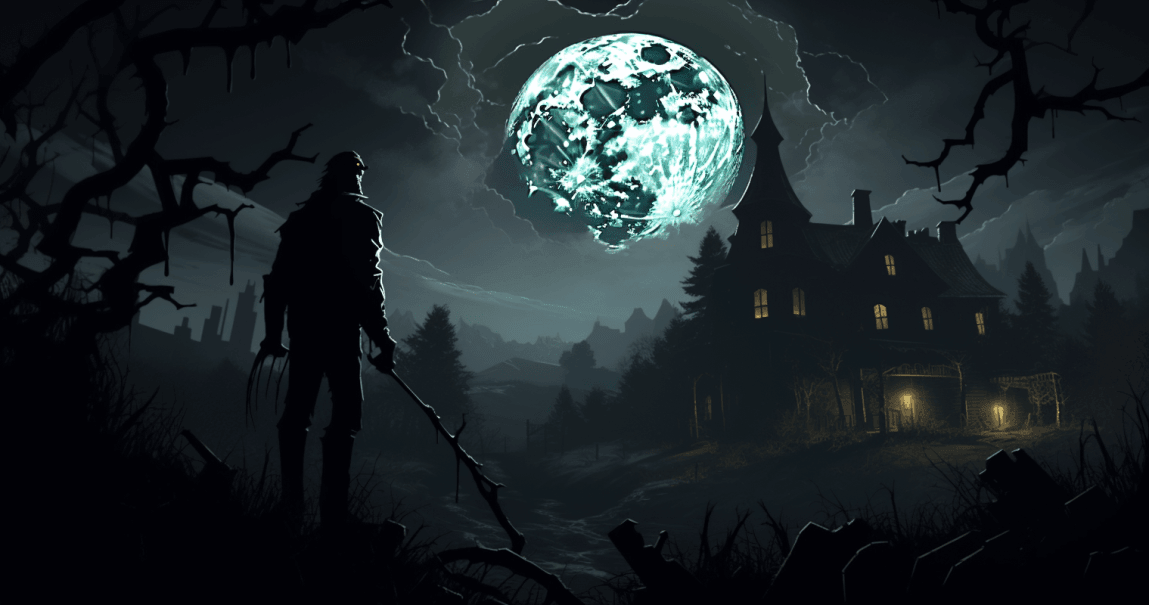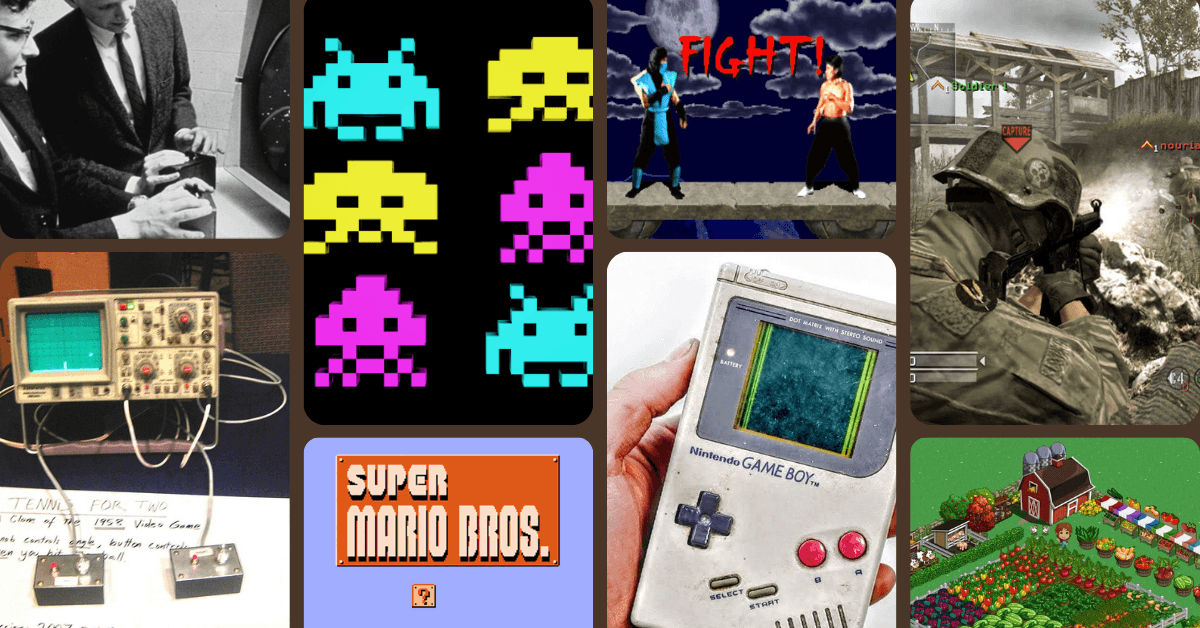Horror games aren’t just for consoles anymore. Today, mobile horror games can deliver the same chills and tension right from your phone. From haunted houses to creepy toys and endless hallways, this gaming genre turns everyday places into nightmare zones.
They’re easy to pick up but hard to put down, mixing jump scares, puzzles, and eerie stories that pull you in. Whether you like escaping monsters, solving mysteries, or uncovering dark secrets, these are the best mobile horror games to keep you scared and entertained anywhere you go.

1. Granny
Granny is a popular mobile horror game made by DVloper. In the game, you wake up trapped inside a creepy old house, and your goal is to escape. The problem is that Granny, a scary old woman, is hunting you. She can hear every sound you make, even small ones like knocking something over.
You have to move quietly, hide under beds or inside closets, and find items that help you unlock doors and escape the house. Each time Granny catches you, you lose a day, and after five days, the game is over.
The game is scary because of the dark rooms, sudden noises, and jump scares when Granny appears out of nowhere. It’s simple to play but really tense, which makes it fun for people who like spooky games on mobile.

2. Five Nights at Freddy’s
Five Nights at Freddy’s is a mobile horror game where you work as a night security guard at a pizza restaurant called Freddy Fazbear’s Pizza. During the day, it’s a fun place for kids. At night, the animatronic animals that entertain kids come to life and start acting creepy.
Your job is to survive five nights by watching the security cameras and keeping the animatronics out of your office. You can close doors and turn on lights, but you have limited power. If you run out of power, the cameras and doors stop working, and that’s when the animatronics can get you.
The game is scary because of the sudden jump scares, dark rooms, and eerie sounds. It’s also full of hidden secrets about what happened in the restaurant, which makes it even more interesting for players who like mystery and horror.

3. Identity V
Identity V is a mobile horror game made by NetEase. It’s a mix of horror and multiplayer survival gameplay. The game takes place in a creepy old mansion where one player becomes the hunter and the other four players are survivors.
The survivors have to work together to repair machines that let them open the exit gate and escape. The hunter’s goal is to catch the survivors before they can escape. Each survivor has special abilities that help them hide, heal, or distract the hunter. The hunter also has unique powers that make chasing and capturing survivors more challenging.
The game is known for its dark, gothic art style, spooky music, and tense matches. It’s also story-driven, with cutscenes that reveal mysteries about the mansion and its characters. Many people like Identity V because it mixes teamwork, strategy, and scary moments in one mobile horror experience.

4. Scary Teacher 3D
Scary Teacher 3D is a mobile horror and comedy game made by Z & K Games. In this game, you play as a student who wants to get revenge on an evil teacher named Miss T. She’s known for being mean to kids, so your goal is to sneak into her house and pull funny pranks on her without getting caught.
You move around her house, explore different rooms, and set traps to scare or surprise her. For example, you might put glue on her chair or change her hair dye. While the game looks a little spooky, it’s more funny than truly scary.
The 3D graphics and silly reactions from Miss T make it fun to watch what happens after each prank. Scary Teacher 3D is popular because it mixes light horror with humor and gives players the freedom to explore and be creative with their tricks.

5. Hello Neighbor
Hello Neighbor by tinyBuild is about sneaking into your neighbor’s house to uncover a dark secret hidden in his basement. You play as a curious person who suspects something strange is going on, so you explore his home without getting caught.
The neighbor is controlled by advanced AI that learns from your actions. If you always sneak in through the same window, he’ll set traps there next time. That makes each try different and more challenging.
The game mixes puzzles, stealth, and mystery, keeping you on edge as you look for clues and find new ways to outsmart the neighbor.

6. Hide in the Backrooms
Hide in the Backrooms by Azur Games is about exploring endless, creepy rooms that all look the same. You find yourself trapped in a maze of yellow hallways with buzzing lights and old carpets, and your goal is to survive as long as possible without being caught by the monsters hiding there.
You have to explore carefully, looking for exits or safe areas while staying quiet and avoiding strange noises. Each level gets harder, and the monsters become more aggressive the longer you play.
The scariest part of the game is the feeling of being lost and alone in a place that seems to never end. Its mix of exploration, suspense, and sudden jump scares makes it one of the most intense horror games on mobile.

7. Poppy Playtime
Poppy Playtime by Mob Entertainment is about exploring an abandoned toy factory filled with creepy, living toys. You play as a former employee who returns to the factory years after everyone disappeared, trying to uncover what happened.
You use a special tool called the GrabPack, which has long, stretchy hands that let you grab objects, open doors, and solve puzzles from a distance. As you explore, you’re hunted by Huggy Wuggy, a giant blue toy with sharp teeth, and later by other scary toys in different chapters.
Each chapter reveals more about the factory’s dark past and the experiments that brought the toys to life. The game’s mix of puzzle-solving, exploration, and horror keeps players curious and scared at the same time.

8. Carrion
Carrion by Devolver Digital flips the usual horror idea around. Instead of running from a monster, you play as the monster. You start as a small red creature trapped in a lab, and your goal is to escape while growing stronger by eating scientists and guards.
As you move through the lab, you unlock new powers like shooting tentacles or splitting into smaller forms. The game has no dialogue, but you piece together its story through how the world reacts to your growing power.
It’s worth playing if you like something different. The controls are smooth, the pixel art looks great, and the idea of being the scary creature instead of the victim makes it one of the most unique horror experiences on mobile.

9. The Baby in Yellow
The Baby in Yellow by Team Terrible is about being a babysitter taking care of a very creepy baby with strange powers. At first, it seems normal—you feed the baby, change its diaper, and put it to bed. But as the nights go on, the baby starts doing weird things like floating, teleporting, and staring at you with glowing eyes.
Each night gets stranger, and the tasks you do become more unsettling. You have to complete simple chores while trying not to panic as the house twists and changes around you.
The game is scary but also funny at times, which makes it stand out. Its mix of creepy atmosphere, weird humor, and short but intense gameplay keeps people playing again and again.

10. Escape from the Mental Hospital
Escape from the Mental Hospital by Peaksel Games puts you inside a dark, abandoned asylum where you have to solve puzzles and find clues to escape. You explore empty halls, locked rooms, and eerie spaces while strange sounds and shadows follow you around.
The game focuses on mystery and exploration more than jump scares. You have to pay attention to details, collect objects, and figure out how to use them to open doors or reveal hidden paths.
Its creepy setting and suspenseful music make you feel trapped and uneasy the whole time. It’s a good choice if you enjoy escape-room style horror games that test your focus and problem-solving skills.
What Makes Top Horror Games Successful?
Whether you’re developing a horror game or simply curious about what makes these games tick, this section will unravel the key components that contribute to their success.

Polished Look & Unique Art
The first thing players notice about a game is its appearance, and that’s especially true for horror games. A polished look not only grabs attention but also invites downloads. The options for art styles are numerous, whether you prefer a gritty, realistic look or opt for something more stylized and abstract.
What’s crucial is that your game’s visuals are captivating and unique.
Given the genre, the art must set the appropriate tone – think dim lighting, a dark color palette, and elements that induce unease.
For instance, the top-grossing horror game Identity V employs a captivating art style that echoes dark storybook illustrations, with a Burton-esque vibe. Interestingly, this aesthetic shares similarities with another NetEase title, Harry Potter: Magic Awakened, crafted by Game Lead Artist Qingfeng Zeng.

Popular IPs
Another potent strategy for capturing attention in the horror games market is leveraging popular IPs. These intellectual properties can be sourced from a range of media – shows, movies, video games, or even books. Incorporating a well-known horror IP does more than just attract fans; it lends instant credibility and intrigue to your game.
Take the IP-based game Five Nights at Freddy’s as a case in point. Originating as a 2014 point-and-click survival horror game developed and published by Scott Cawthon, its IP has drawn a massive following and has even expanded into various media formats.
But it’s not always necessary to base the entire game on a specific IP.
Often, the inclusion of characters or elements from popular horror IPs can be enough to create a buzz and attract a wider player base.

Gripping Storylines
When it comes to holding players’ attention, the storyline plays a pivotal role. In the realm of horror games, there’s a spectrum of approaches to consider.
Some top horror games, like Granny by DVloper, opt for a simple but compelling premise – “Granny keeps you locked in her house. Now you have to try to get out of her house, but be careful and quiet. She hears everything.”
Another example is Nextbots from Backrooms, where the storyline is succinct yet intriguing – “Nextbot is what will haunt you. Run from the trends in the worst place in the Backrooms.”
On the opposite end, there are games that invest heavily in intricate storylines and elaborate world-building. These games often feature dozens of characters, each fleshed out with their own backstories and a comprehensive narrative that unfolds as players progress.
Regardless of the approach you choose, having a storyline is non-negotiable. Whether it’s a simple premise or a complex narrative, the story serves to engage players and keep them hooked, offering yet another layer to the gaming experience.

Character Collection Monetization
A unique cast of characters often serves as the lifeblood of top horror games.
In some instances, these characters might even be borrowed from familiar horror IPs to lend an added layer of intrigue. For example, Dead By Daylight Mobile boasts a roster that includes iconic figures like Freddie Krueger, as well as mythical beings like The Baba Yaga and Krampus.
Each character group is assigned a rarity level, which encourages players to expand their collection. While some characters can be acquired for free, the rarer ones come with a price tag.
Identity V follows a similar monetization strategy, featuring a wide array of characters available for purchase.
So, why does this character collection model work so well for monetization?
It taps into players’ desire to collect things and invest in their gaming experience, creating a cycle where they’re motivated to acquire new characters, and by extension, invest more time and resources into the game.
This monetization tactic doesn’t end with character acquisition. There’s also the potential for players to purchase cosmetic items and outfits for their characters, adding another layer to revenue generation – but we’ll delve into cosmetic monetization in the following section.

Cosmetic Monetization
Customization adds a personal touch to gaming, allowing players to express their individuality within a virtual world. It’s a great feature to have as players enjoy it, but it can also provide a basis for cosmetic monetization, offering a win-win situation for both developers and players.
The appeal of personalization often encourages players to spend on cosmetic items, driving a significant source of revenue for developers.
For instance, Identity V offers an exhaustive list of cosmetic options – from costumes and accessories to pets, behavior modifiers, portraits, custom lobbies, and even music. It’s rare for a game to offer such extensive customization options. While some of these items can be earned through gameplay, others are available for purchase.
Because players relish the opportunity to tweak various game elements, they’re more inclined to invest in these cosmetic items. Whether it’s outfits, furniture, or pets, this form of monetization proves effective because it directly appeals to a player’s desire for self-expression and customization.

Liveops
Liveops, or live operations, is the pulse that keeps a mobile game thriving long after its initial launch.
For horror games, this is no different.
The primary goal of liveops is to continually feed new content to players, ensuring they remain engaged with the game. Whether it’s introducing new characters, story chapters, maps, cosmetic items, or events, fresh updates can significantly boost both player retention and monetization.
But how do you build anticipation for new content?
It’s all about strategic timing and communication. Teasers, sneak peeks, and countdowns can create a sense of urgency and excitement among players.
Platforms like social media channels, in-game announcements, and community forums are excellent mediums for disseminating this information.
The trick is to strike a balance – you want to give enough information to stir interest but not so much that you eliminate the mystery. By keeping your players on their toes with regular updates and strategically teasing with new content, you’re not just maintaining interest – you’re amplifying it.
Multiple Game Modes
Variety in terms of content and game modes is a must for mobile horror games. Most top performers in this genre offer more than one game mode, which significantly amplifies player engagement. For instance, many games allow players to step into the shoes of either the hunter or the prey, or the killer or survivor.
Why does this matter?
Offering multiple game modes provides diverse gaming experiences that keep players hooked. It allows them to choose a gameplay style that resonates with their preferences – whether they’re into the thrill of the chase or the tension of survival.
This flexibility not only enriches the player’s experience but also adds layers of replayability to the game, making it a win-win for everyone involved.

Meta-Layers
Sometimes it’s the subtle extras that elevate a game from good to great. That’s where meta-layers come in.
While not integral to the core gameplay, these additional features add depth and offer players more avenues for engagement. Implementing meta-layers can significantly boost both player engagement and retention, as they introduce new facets to explore and master within the game.
Take Identity V, for instance.
Beyond its core horror elements, it incorporates a home design system, allowing players to design their dream houses.
So, why are design and décor meta-layers such a hit with players?
Simple – they provide a creative outlet that offers a break from the primary game focus, whether that’s surviving a haunted house or outwitting a relentless killer. This extra layer of personalization and creativity feeds into the overall player satisfaction, making them more likely to stick around for the long haul.
Top Mobile Horror Games: Final Thoughts
From eye-catching art styles and effective monetization strategies to the crucial role of liveops, top horror games on mobile utilize a variety of techniques to capture and keep players engaged.
With the horror games market showing no signs of slowing down, understanding these key success factors can offer invaluable insights.







Comments